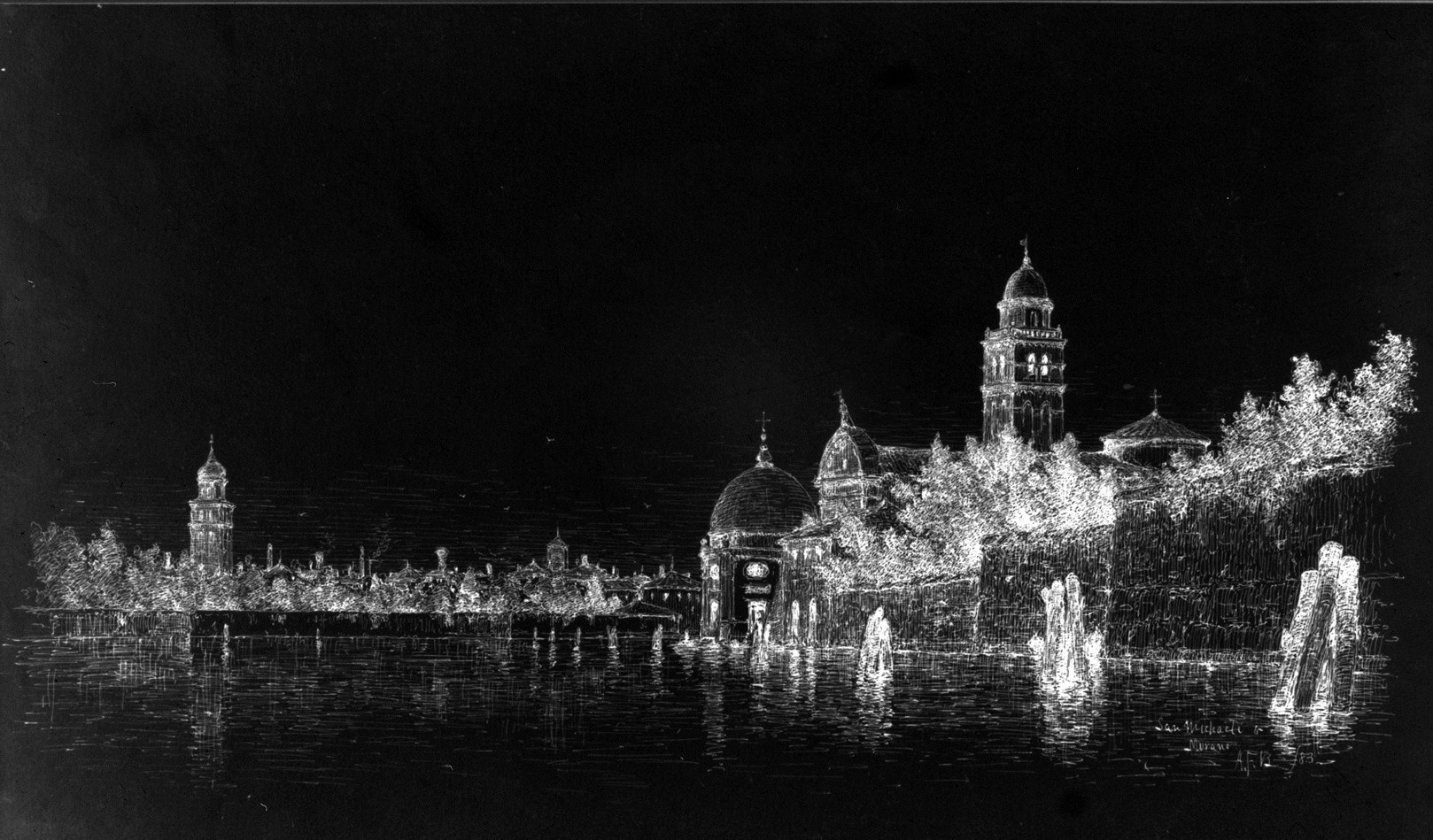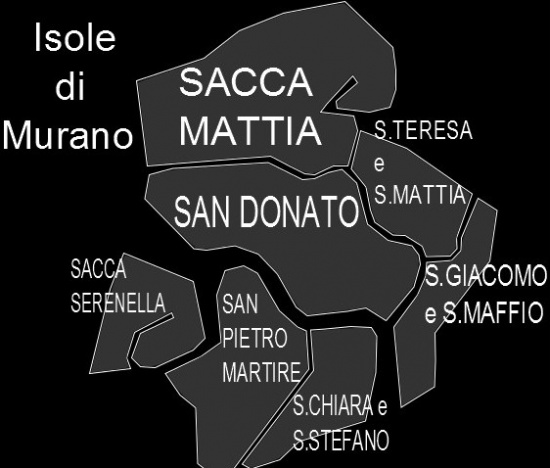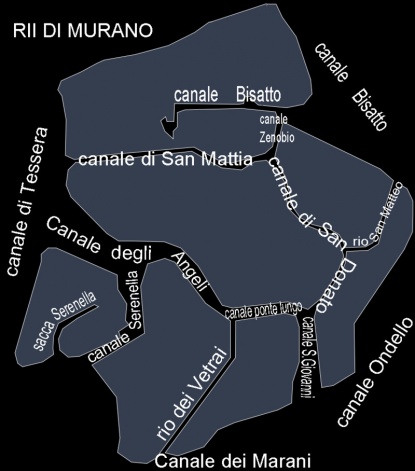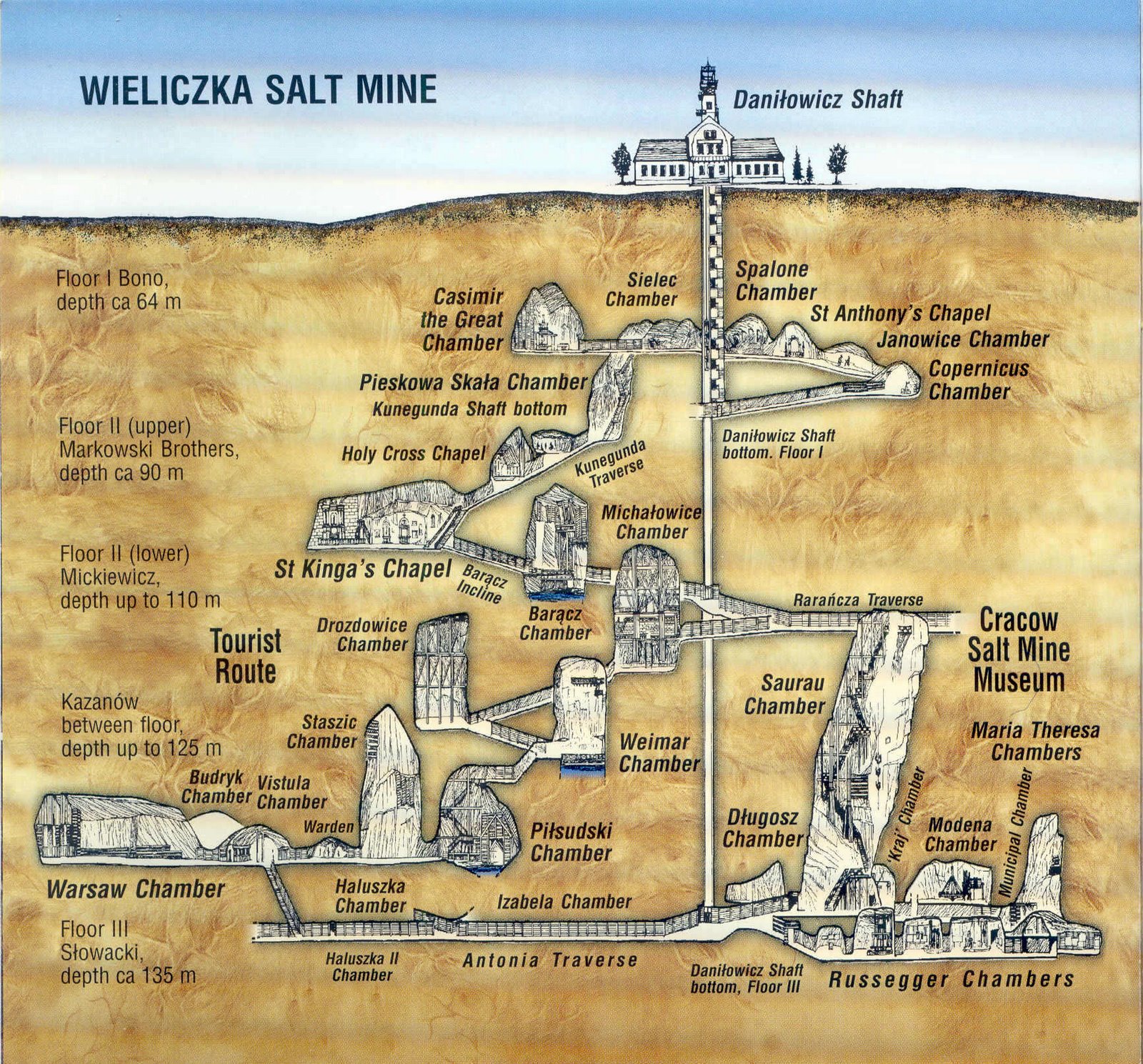Murano
Contents
History
Murano was initially settled by the Romans and from the sixth century by people from Altinum and Oderzo. At first, the island prospered as a fishing port and through its production of salt. It was also a center for trade through the port it controlled on Sant'Erasmo. From the eleventh century, it began to decline as islanders moved to Dorsoduro. It has a Grand Council, like that of Venice, but from the thirteenth century, Murano was ultimately governed by a podestà from Venice. Unlike the other islands in the Lagoon, Murano mints its own coins.
Early in the second millennium hermits of the Camaldolese Order occupied one of the islands, seeking a place of solitude for their way of life. There they founded the Monastery of St. Michael (Italian: S. Michele di Murano). This monastery became a great center of learning and printing. The famous cartographer, Fra Mauro, whose maps were crucial to the European exploration of the world, was a monk of this community. The monastery was suppressed in 1810 by French forces under Napoleon, in the course of their conquest of the Italian peninsula, and the monks were expelled in 1814. The grounds then became Venice's major cemetery.
In 1291, all the glassmakers in Venice were forced to move to Murano due to the risk of fires.[2] In the following century, exports began, and the island became famous, initially for glass beads and mirrors. Aventurine glass was invented on the island, and for a while Murano was the main producer of glass in Europe. The island later became known for chandeliers. Although decline set in during the eighteenth century, glassmaking is still the island's main industry.
In the fifteenth century, the island became popular as a resort for Venetians, and palaces were built, but this later declined. The countryside of the island was known for its orchards and vegetable gardens until the nineteenth century, when more housing was built.
Maps of Murano
Islands of Murano
In order to understand the layout of the islands of Murano, it helps to think of them as being positioned clockwise and thus they will be listed in that way.
- Sacca Mattia -- The northern most of the Murano's islands. The primary industry is salt mining, the island his home to six salt mines, one of which is abandoned.
- Sacca Teresa -- A small island just to the east of Sacca Mattia and San Donato. Primarily a island of vineyards and small farms, many on the island are also fishermen.
- San Giacomo -- This long serpentine island is located just south of Sacca Teresa and directly east of San Donato. The island serves as a breakwater against storms and is a squalid neighborhood of fishermen's huts and stinks of fish.
- Sacca Chiara -- No larger than Sacca Teresa, this small island has recently become home to Murano's growing population in tradesmen and new houses seem to go up daily creating brand new nameless streets and alleyways that appear on no maps.
- San Pietro Martire -- The third largest of the seven islands, it muddy and winding streets are home to the sailors of Murano, for just across the Canale Serenella lies the Cantiere Motonautico Serenella, the shipyards of Murano.
- Sacca Serenella -- This snail shaped island is the location of Murano's famed shipyards. A few decades ago, the glass-makers of Venice established a large foundry on the northern tip of the island to lessen the risk of fire to the city.
- San Donato -- The central island and hub of Murano's seven islands. Within its environs are the Church of Santa Maria e San Donato, the Monastery of St. Michael of Murano, the town-hall and the Guildhall of Glass-makers.
Place of Interest
- Glass Maker's Guildhall
- Glass-Maker's Foundries
- Sacred Gull -- A popular tavern with locals and visiting sailors
- Church of Santa Maria e San Donato -- A Byzantine style church established in the 7th century.
- Monastery of St. Michael of Murano -- Established in the early years of the 11th century. {About a hundred years ago}
Citizens of Murano
- Bishop Livio Passerini -- Bishop of Murano.
- Father Savino Carrara -- Local parish priest. {Deceased}
- Capitano Marko -- Slayer of Dragons -- A young militia man who gains a field promotion via his bosses death at the claws of a Tzimisce in Zulo shape. (actually Brian's character)
- Alfeo -- A young militia man with a weak stomach.
- Daniela -- Young server at the Sacred Gull (tavern) and sometimes whore, she often serviced Pompeo and was horrified by his death.
- Eustachio -- Sailor and enemy of the dead sailor Pompeo.
- Gasparo Ungaro -- Signore & Councilor (the first councilor of Isola di Murano that Marko has met)
- Evaristo Dinapoli -- Signore & Councilor with a hound headed dagger.
- Bonaccorso Adesso -- Signore & Councilor in charge of funds.
- Pompeo & Naldo -- Sailors (both deceased along with Naldo's entire family).
- Saverio -- Elderly gravedigger.
- Marcellino -- Gravedigger & son of Saverio.
- Ercole -- Shipyard nightwatchman
Vampires of Murano
- Vasileios Michelakis -- Artisan of Glass - {Toreador}
- Jela Kovač -- Il drago di Murano - {Tzimisce} - Mass murderer of Serbian origin
Abandoned Murano Salt Mine



